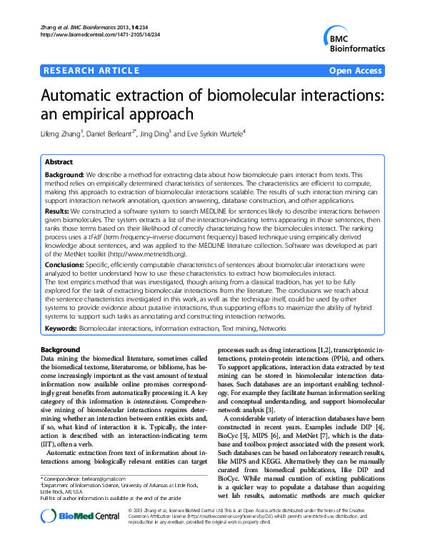
Background
We describe a method for extracting data about how biomolecule pairs interact from texts. This method relies on empirically determined characteristics of sentences. The characteristics are efficient to compute, making this approach to extraction of biomolecular interactions scalable. The results of such interaction mining can support interaction network annotation, question answering, database construction, and other applications. Results
We constructed a software system to search MEDLINE for sentences likely to describe interactions between given biomolecules. The system extracts a list of the interaction-indicating terms appearing in those sentences, then ranks those terms based on their likelihood of correctly characterizing how the biomolecules interact. The ranking process uses a tf-idf (term frequency-inverse document frequency) based technique using empirically derived knowledge about sentences, and was applied to the MEDLINE literature collection. Software was developed as part of the MetNet toolkit (http://www.metnetdb.org). Conclusions
Specific, efficiently computable characteristics of sentences about biomolecular interactions were analyzed to better understand how to use these characteristics to extract how biomolecules interact.
The text empirics method that was investigated, though arising from a classical tradition, has yet to be fully explored for the task of extracting biomolecular interactions from the literature. The conclusions we reach about the sentence characteristics investigated in this work, as well as the technique itself, could be used by other systems to provide evidence about putative interactions, thus supporting efforts to maximize the ability of hybrid systems to support such tasks as annotating and constructing interaction networks.
Available at: http://works.bepress.com/eve-wurtele/33/

This article is from BMC Bioinformatics 14 (2013): 234, doi: 10.1186/1471-2105-14-234. Posted with permission.